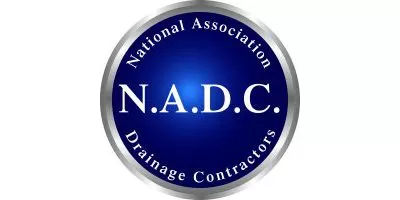





A cesspit works by creating a sealed underground tank to collect and store the wastewater from a property. This is done without any treatment, meaning it is raw sewage – everything from your sinks, toilets and drains is taken directly to the tank. The wastewater stays in the tank until it is removed by a licensed waste carrier, usually involving a vacuum tanker to empty your cesspit.
Cesspits differ from septic tanks or sewage treatment plants because they do not contain an outlet pipe, and there is no treatment provided for what the cesspit holds. Regular emptying of the tank is, therefore, absolutely critical to avoid it overflowing and polluting the surrounding areas.
Here in the UK, a cesspit is considered a last resort when it comes to drainage solutions, which is why they are mainly used by rural homes where there is no mains sewage connection.
As experts in all things related to drainage, this month at Express Drainage Surveys, we’re giving you the full insight into: what a cesspit is, how it works internally, what you need to know about maintenance as a homeowner, the benefits and drawbacks, legal responsibilities, and generally how they differ from the other options available to you.
In the simplest terms, a cesspit is an underground tank which is watertight, meaning it can be used purely for the storage of untreated wastewater from sinks, showers, toilets, washing machines and dishwashers. This can be held until it nears capacity, at which point it must be emptied.
A cesspit is unlike septic tanks and sewage treatment plants because it has:
Believe it or not, cesspits were once quite common for properties until newer, advanced treatment systems were introduced and adopted. These days, you will only need a cesspit if you have no connection to the main sewer and no appropriate space on your property for a soakaway. There could also be situations where a cesspit is required due to local regulations which prohibit other options, but this is rare.
Cesspits have previously been made of brick and concrete, but they’re more likely to be glass-reinforced plastic or another form of modern plastic tank. They are commonly buried with a single manhole cover and vent at ground level.
Cesspits, as you can probably now imagine, are relatively simple in their design, but here are some of the essential features they do have:
Again, there is no outlet, so as time goes on, the cesspit chamber fills with a mix of solids and liquids. The level rises, with no discharge, and when it nears capacity, the owner should arrange for it to be emptied. Automatic sensors can alert you to this, or manual inspections may be needed to avoid overflow and odours.
The filled tank is then emptied by a licensed waste disposal company, which will pump out the contents into a tanker, transporting the waste to a treatment works to be disposed of safely.
To have a cesspit, you must be committed to regular maintenance, which includes emptying frequently and keeping the tank structurally sound. Here are some tips to follow:
As with any drainage and treatment solution, you should always weigh up the pros and cons. We’ve done that for you here for cesspits:
In the UK, cesspits are covered by the waste and environmental regulations, but not in the same way as septic tanks. The main thing to note is that your cesspit is not regulated by General Binding Rules.
Instead, you, as the owner, are legally responsible for making sure you prevent pollution from your cesspit, including leaks and overflows. Falling foul of this rule can lead to prosecution by the Environment Agency.
Here at Express Drainage Surveys, we provide a wide range of services to help with the drains on your property. Browse our CCTV and cleaning services to find out more about how our expert team can keep things flowing:
Need to know more about the drainage at your property and want a CCTV drain survey? Contact us today and we’ll arrange an appointment for a time that suits you.
This website uses cookies to enhance your browsing experience and deliver personalised ads. By clicking “Accept All Cookies”, you agree to the storing of cookies on your device to enhance site navigation, analyse site usage, and assist in our marketing efforts.